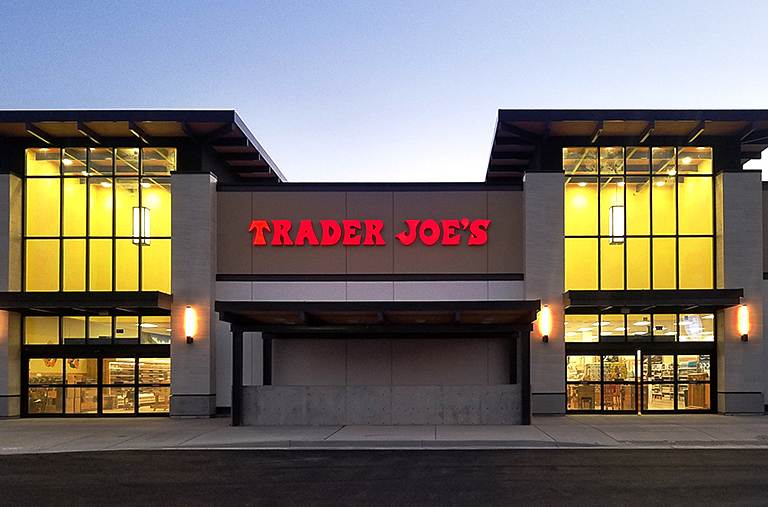Dunnhumby, a customer data science company, on Jan. 9 released the second annual dunnhumby Retailer Preference Index (RPI), a nationwide study that examines the $700 billion U.S. grocery market.
The RPI study surveyed 7,000 U.S. households to determine which of the top 56 largest grocery retailers have the strongest combination of financial performance and consumer emotional sentiment. For the second year, Trader Joe’s was the top-rated grocery retailer. The grocery retailers with the highest overall consumer preference index scores this year are:
- Trader Joe’s
- Costco Wholesale
- Amazon
- H-E-B
- Wegmans Food Markets
- Market Basket
- Sam’s Club
- Sprouts Farmers Markets
- WinCo Foods
- Walmart
- Aldi
- Peapod
- The Fresh Market
The overall RPI ranking evaluates retailer performance on seven pillars: price, quality, digital, operations, convenience, discounts/rewards and speed.
Although Trader Joe’s was the overall top rated grocery retailer, the following retailers also were ranked the top retailer in the seven pillars evaluated: Aldi (price), Wegmans Food Market (quality), Amazon (digital), Market Basket (operations), Walmart (convenience), Fry’s (discount, rewards, information) and Amazon (speed).
“While consumer confidence in the U.S. is at a near 18-year high and the U.S. economic growth is outpacing the rest of the world, there are signs of turbulent times ahead, and grocery retailers need to be prepared,” said Jose Gomes, dunnhumby’s president of North America. “Because of pressures that grocery retailers are facing today, a common reaction is to think only of the short term. But by focusing on the customer preference levers that we have identified in this RPI to inform their strategies, retailers can buy an insurance policy for the future to ensure they can weather the storms ahead.”
According to dunnhumby, the retailers who focus their business on superior value perception—defined by the strongest combination of price and quality—tend to have the most financial success and the strongest emotional bond with consumers.
Key takeaways from the study include:
Understand customer needs and be excellent at what matters most to win their preference.
“Trader Joe’s is a prime example of a retailer making trade-offs to deliver superior value, and it has earned them the top spot for two years in a row,” says dunnhumby.
With its small format, lack of digital shopping and limited national brand offering, the retailer focuses on speed of in-store shopping and having a rich private brand offering, the report finds. This bricks-and-mortar only, private brand approach minimizes costs and keep prices low, allowing Trader Joe’s to reinvest in customer service, product quality and in-store experience. “This strategy sacrifices reaching customers through a growing digital channel and breadth of assortment, and therefore losing on one-stop shop-ability and convenience,” says dunnhumby. “However, this loss is also their gain since it allows them to deliver what matters most to their customers.”
Two needs rise above all others for most food retailers and have the greatest weight in determining RPI ranking, forming the core of value perception: price and quality.
Retailers that rank in the first quartile overall excel in value perception and, as a result, have sales growth that is two times greater than retailers in the second quartile and nine times greater than retailers in the bottom two quartiles. The other customer needs, like digital, speed, convenience or discounts/rewards, while still important, have a weaker association with retailer preference.
First quartile retailers are mostly non-traditional grocers, who have developed a highly targeted offering designed to maximize value perception for their specific customer base.
More traditional, regional grocery banners with a long history are hurting because of it, having relatively poorer performing financials and/or emotional bonds. The reason: these traditional banners have inferior price perception and/or quality. The RPI’s top three overall retailers excel in these two factors (Amazon on price; Trader Joe’s and Costco on both).
For some traditional, regional grocers, discounts/rewards and promotions are contributing to sales growth, but for many, this is adding to financial difficulty.
In the U.S., hundreds of millions of dollars are spent on discounts, rewards and promotions every year, but more than two-thirds of promotions don’t break even. To maximize the success of a discounts/rewards program, retailers need to have at least average price perception and a highly relevant assortment, supported by a strong private brand.
Private brand is a common key to driving value perception and improving customer preference for retailers up and down the rankings.
Six of the top 10 private brand performers are in the first quartile of the RPI overall. Additionally, many of the most successful traditional, regional grocers occupy the second quartile, and they complement a highly relevant assortment with a strong private brand, allowing them to maintain solid price perception, says dunnhumby. Lastly, private brand is a key element in driving both price and quality perception and thus overall value perception, where retailers in the bottom two quartiles are struggling the most.
Retailers who tended to see improvements in their digital rank also tended to see slips in their operations (i.e. out of stocks, pricing consistency, clean stores, right product variety).
Retailers that ramp up investment in digital must be cautious not to take their eye off the retail basics.
Some retailers have achieved an excellent digital customer experience, but their financial performance has not benefited, while others with a focus on digital manage to thrive.
Retailers missing any of the following are not maximizing the impact of digital investment: large scale, great price perception and a category DNA leaning toward center store items and non-grocery products.
The latest dunnhumby RPI is available for download here.

